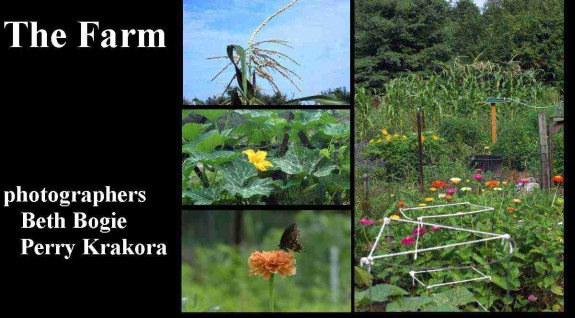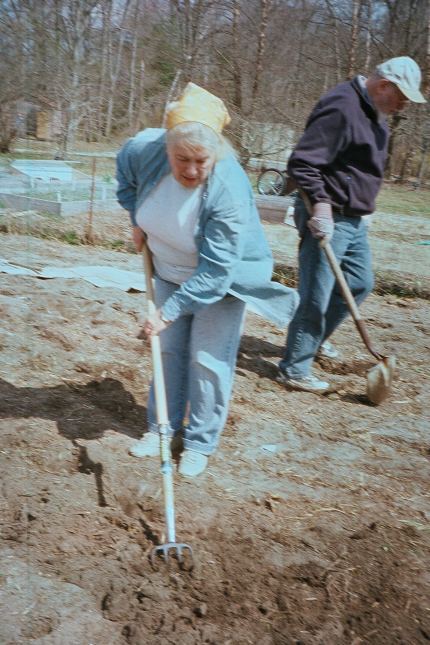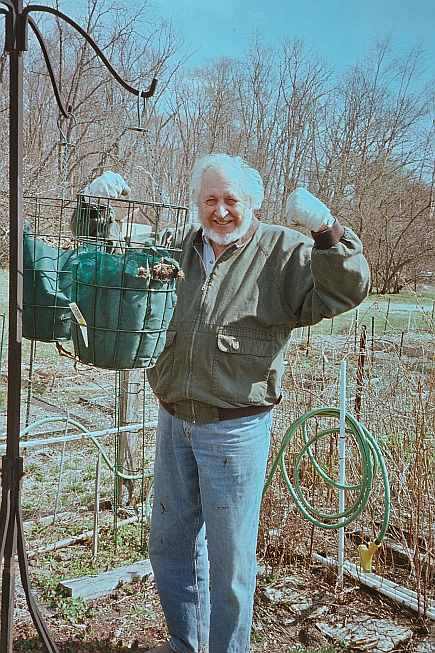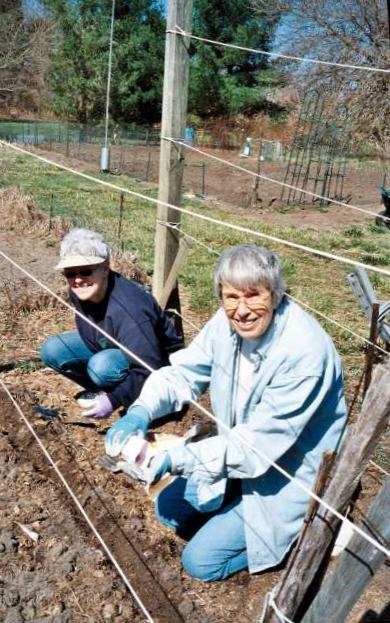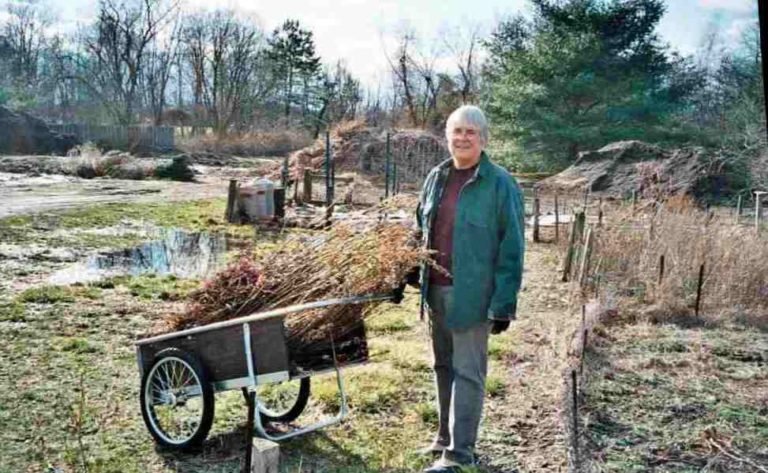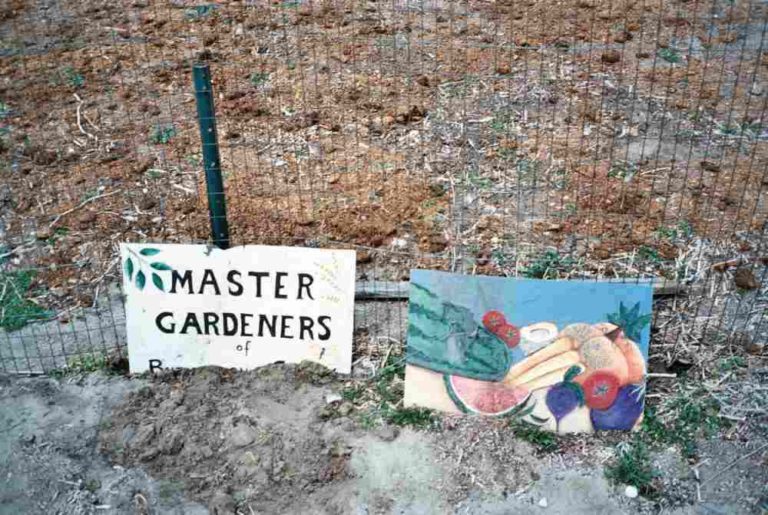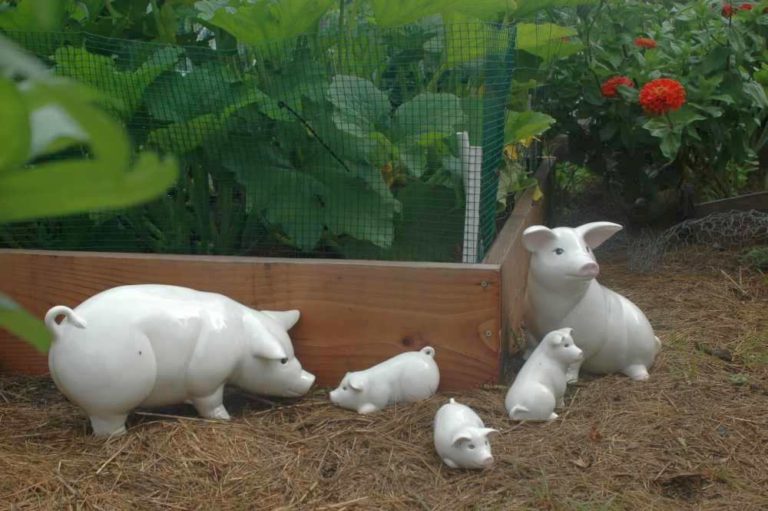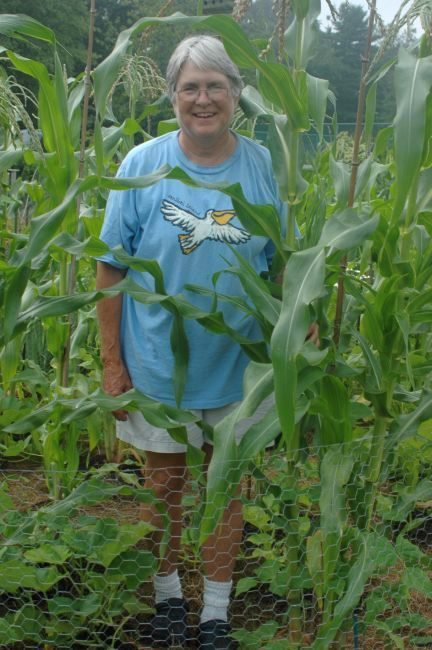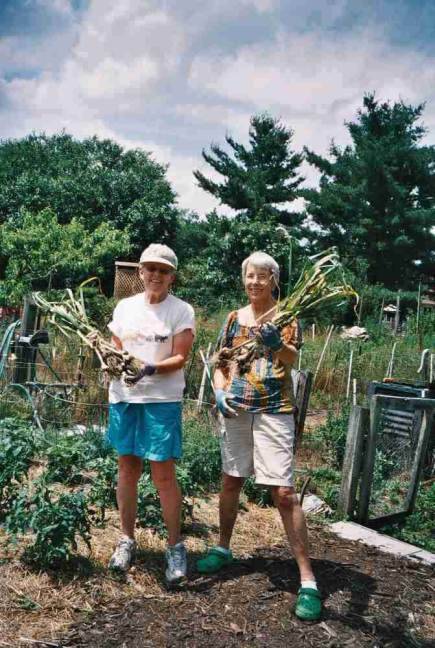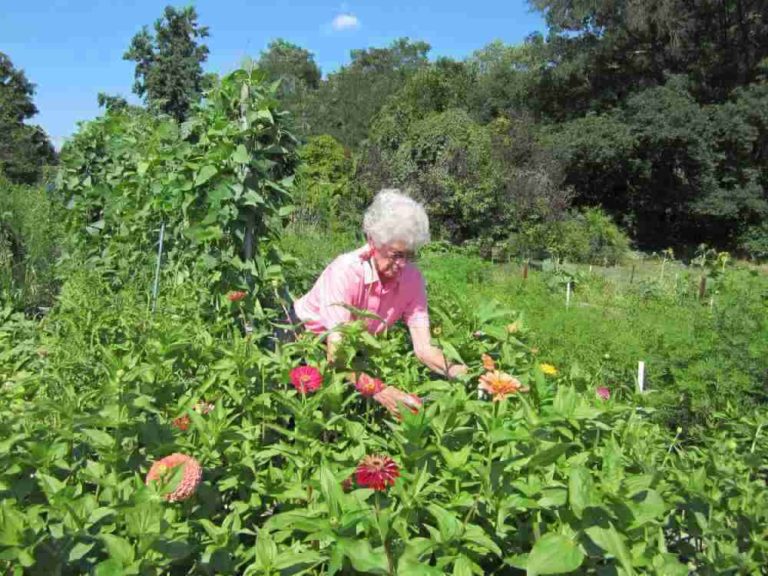He Digs, He Dug, He Has Dug
“My garden will never make me famous.
I’m a horticultural ignoramus,
I can’t tell a string bean from a soybean,
Or even a girl bean from a boy bean.”— Ogden Nash
Many of us Medford Leas residents are all thumbs when it comes to growing things. But others of us have green thumbs — at least varying shades of green. Gardeners of all skill levels for many years have turned over the soil each spring on a patch of Medford Leas land called The Farm, available for residents to grow vegetables and flowers.
The one-and-a-half acres of The Farm are divided into plots ranging from 25 by 75 feet, to 25 by 25 feet, down to unfenced ground good for planting flowers. The site lies behind the Nature Center and tennis courts. Plots are still available for interested residents.
Spring Planting
(Left) Rona Keilin, resident and farmer since 2003, is in charge of helping residents choose their plots, answering questions, and dealing with issues about water and rodents, with the assistance of her rodent-hunting terrier Meggie. This year, Rona has planted potatoes, onions, peas, lettuce, spinach, carrots, and strawberries, to be followed by more planting after May. Ezra Shahn, Rona’s partner, is in the background. Video – Farming with Rona.
(Right) Sandy Heath, who doesn’t consider himself among the big-league gardeners, nevertheless was found enthusiastically planting peas, string beans, and zucchini one raw March day.
(Left) Arthritis sufferer Steve Denham is planning an “upside down garden,” in which tomatoes, onions and peppers are planted in bags that hang from shepherd’s hooks. Tomatoes and onions are made to grow through a hole in the bottom of each bag, while peppers grow in the soil above. Dunbar, Steve’s wife, was once chair of The Farm and then co-chair with Rona.
(Right) Betsy Snope says she is in the Ogden Nash category and is working as “helper” to more experienced Susan Dowling in planting sugar snap peas. They admired the green shoots of their garlic, already up by late March. Suzanne Frank, a Victory gardener as a child, hopes for rhubarb and, in the summer, her favorite zinnias.
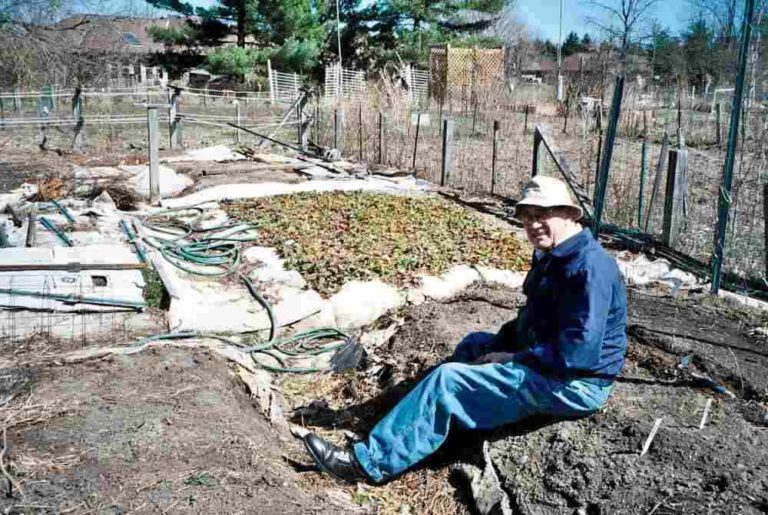
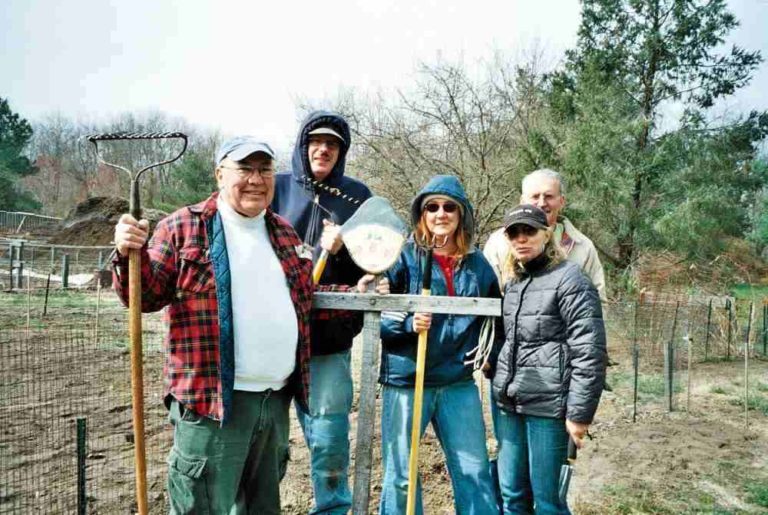
Harvest Time
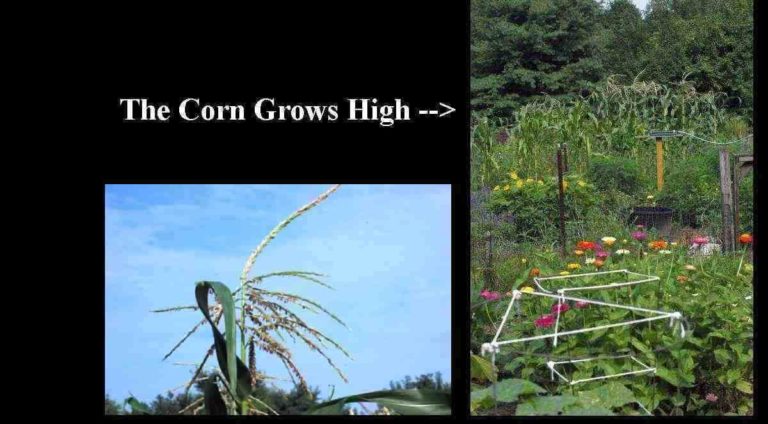
By late July, the corn in the “Three Sisters” garden was taller than its adventurous grower Perry Krakora. As Indians once did, she planted beans to climb the corn stalks, and squash to keep moisture in and hold down the weeds between the rows of corn. Perry’s garden plots also overflow with onions, garlic, parsnips, tomatoes and asparagus.
When my next door neighbor, Susan Dowling, came to my front door proudly bearing a zucchini, a cluster of garlic and a sprig of basil, fresh from her plot on The Farm, I knew it was harvest time, even though only late June. Susan and her farming partner, Betsy Snope, were like kids at Christmas over their crops of garlic, zucchini, cucumber and snap peas.
The Farm, a community garden of an acre and a half, is available for the horticultural creativity of residents, the Master Gardeners of Burlington County, and Debbie Lux, horticulturist in Landscaping. Produce not needed by the resident gardeners is placed on a table at the entrance of the Community Building for all residents to enjoy. The Master Gardeners’ output goes to food pantries throughout the county. And Debbie Lux has used her plot to demonstrate to high school horticulture students from Burlington County Institute of Technology how to grow a cutting garden.
In March, residents had weathered the cold to plant their peas, lettuce and onions. Now, in summer’s record heat and dryness, portable sprinklers were working hard.
Along with withering heat were the appetites of woodchucks (aka groundhogs), voles and deer to challenge our farmers. I was introduced to a young teenage woodchuck in a trap, the third captured with great fanfare. He would be taken beyond the creek and released, I was told. I suspect he will be a recidivist.
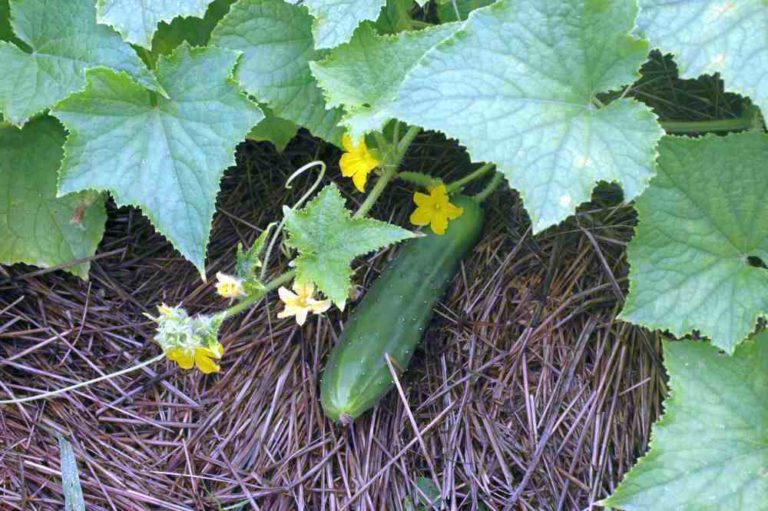
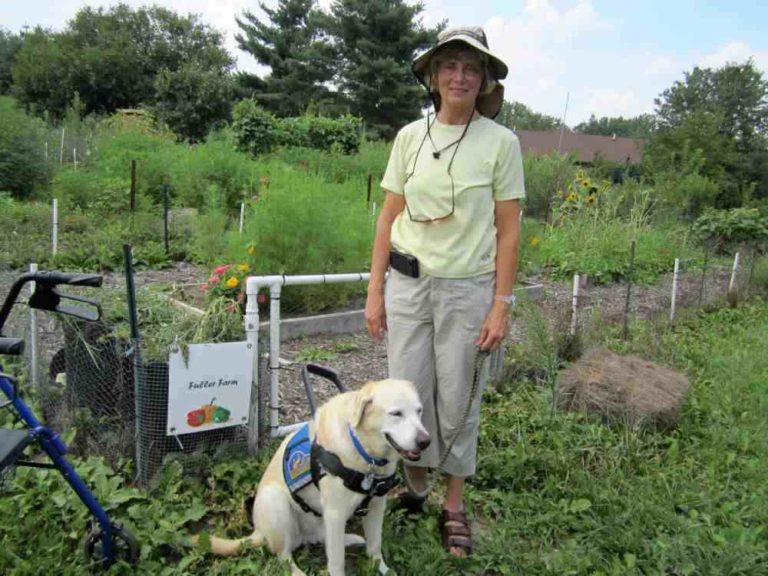
To own a bit of ground, to scratch it with a hoe,
to plant seeds, and watch the renewal of life –
this is the commonest delight of the race,
the most satisfactory thing a man can do.— from My Summer in a Garden (1870)
Charles Dudley Warner, publisher of the Hartford Courant

